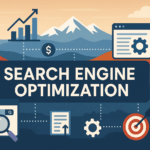Content pillars are central in modern digital marketing, bridging the gap between audience engagement and SEO optimization. Let’s dissect their role, crafting process, and how you can integrate them effectively in your strategy.
Breaking Down Content Pillars
These are comprehensive and detailed materials honed on a specific subject. Acting as a hub, they connect related yet detailed subtopics, offering a comprehensive learning experience for the audience.
The Upside of Integrating These Content Pillars
SEO Advantage
Content pillars cater to the organizational preference of search engines. For a glimpse into the intricate dynamics of SEO, our insightful article about the future of SEO is a treasure trove of information.
Engaging a Diverse Audience
With varied insights nested under a unified theme, these pillars ensure that every reader finds something valuable, fostering increased engagement and loyalty.
The Crafting Process of Content Pillars
Selecting the Right Topics
The journey begins with pinpointing compelling topics, a harmonious blend of audience curiosity and SEO alignment. Dive deeper into this blend in our SEO evolution article.
Constructing In-depth Narratives
Value and depth characterize each piece. Every narrative should not just inform but also engage, a principle you can witness in action through our tailored SEO offerings.
Developing Connected Subtopics
Subtopics of content pillars should intricately link back to the central piece, weaving an interconnected informational tapestry, much like the multifaceted insights shared in our 4 P’s of Marketing article.
Practical Examples of Content Pillars
In the Marketing Realm
Consider a foundational piece on digital marketing. Connected subtopics like SEO tactics, content innovation, and audience engagement strategies collectively offer a rounded resource.
The Wellness Space
A central piece on wellness could unfurl into detailed content on mental health, balanced nutrition, and fitness regimes, painting a complete wellness picture.
Implementation Strategies
Aligning with Objectives
Every piece should resonate with the audience while echoing the brand’s strategic goals, ensuring content that not only informs but also builds the brand.
Analytics Insights
Moreover, data should guide refinement of content pillars. Evaluating performance metrics ensures each piece and subtopic undergoes optimization, enhancing overall content quality and effectiveness.
Navigating Creation Challenges
Developing these foundational pieces demands investment in research and optimization. However, the boost in SEO rankings and audience connection they offer makes every effort worthwhile.
Closing Thoughts on Content Pillars
In the digital content space, these foundational pieces stand as strategic assets that captivate audiences and bolster SEO, principles we embed in our unique website designs.
Discover More
For more insights and personalized content strategies, explore our SEO blogs or reach out to us directly.
Content pillars are essential in the dynamic world of digital marketing and SEO. Let’s explore their nature, significance, and how to implement them effectively.




